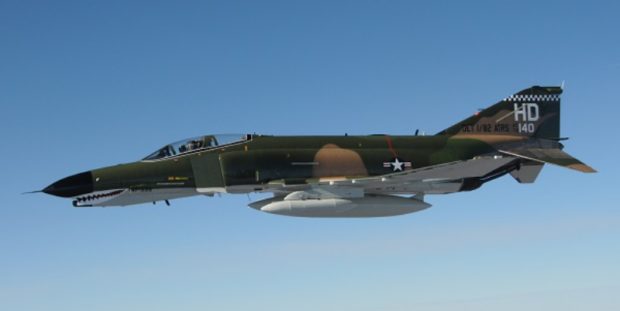The McDonnell Douglas F-4 Phantom II is a legend. An extremely competent multi-role aircraft it was one of the few planes to serve with the United States Navy, Marines and Air Force, making the Phantom one of the most important types to fly during the Cold War.
Indeed, the Phantom’s widespread service, flying with the air forces and navies of twelve countries, made it the West’s most potent combat aircraft in several strategically important locations and in multiple confrontations over a two-decade period.
In terms of the technical advance the aircraft represented on its introduction into service in 1961, combined with its operational capabilities, the sheer numbers produced and an extensive combat record, the Phantom has a solid claim to being one of the best combat aircraft ever built. Indeed, you’ll find some aviation historians that will argue that the aircraft ranks as the greatest fighter of all time.
Of course, such an aircraft saw a huge amount of development during its service career to be ranked so highly, and the Phantom was continuously upgraded throughout its life span; a period that spans from the aircraft’s first flight in 1958 to the current day. This in an aircraft that ended production in 1979, with a total of 5197 built.
Naturally, with the Phantom being in such widespread service, the end of production did not mean the end of upgrading and development efforts. Though McDonnell Douglas stopped building new models, other nations that relied on the F-4 for their defence did update the design so that it would continue to meet their needs.
But interestingly the United States did not, at least not to anything like the standards other nations planned. Which is a little surprising, given the context.Though the end of the Cold War ultimately meant that the F-4 could be retired in the 1990s from US service, that hadn’t been the original expectation. As the F-4 was displaced by the newer “teen-series” aircraft at the end of the 1970’s and beginning of the ‘80’s, the expectation was that the Phantom would continue to serve in the US Reserve and National Guard fleets for possibly two more decades.
A 1984 joint venture between Boeing and Pratt & Whitney for a Phantom variant with Pratt & Whitney PW1120 turbofan engines, giving a significant performance gain over J79 Phantoms. The aircraft would also have an 1,100 US gal (4,230 L) conformal fuel tank under the fuselage.
Sources: Military Matters; YouTube


True story:
An Air Force Lt Col, who was then commanding a Predator squadron said in 1999, ‘We should bring back the F4’. His DO quickly rebutted, “What the F 4?”